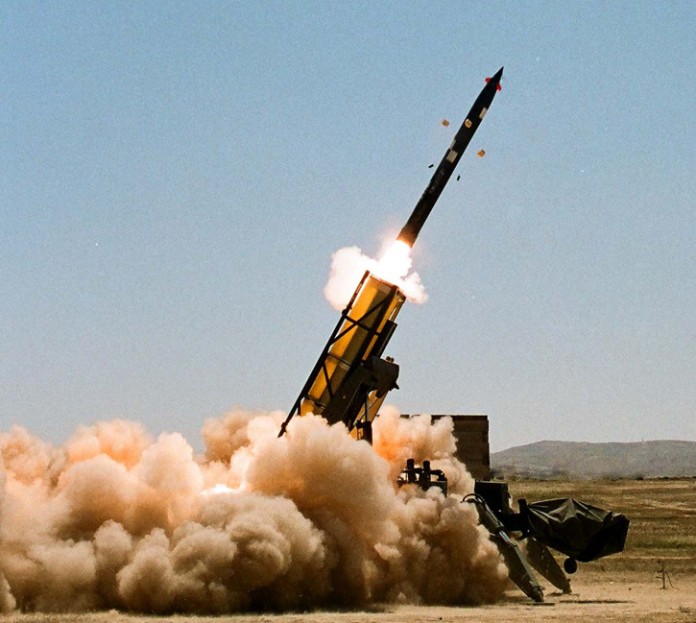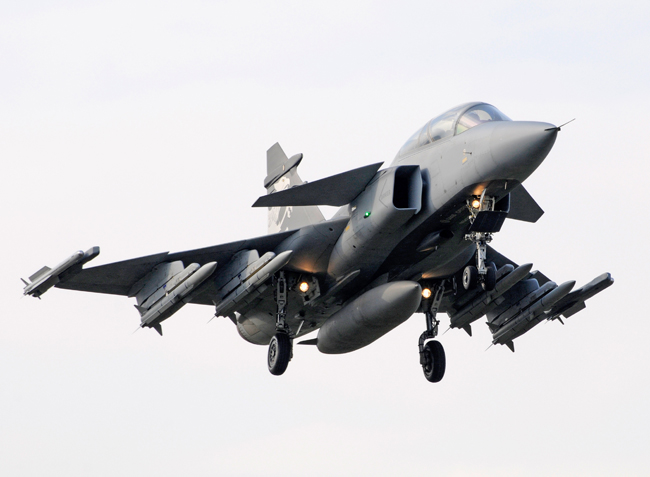
Yesterday (Wednesday, December 7, 2016) at 03:00 explosions shattered the night sky over Damascus, a fire that erupted at the military airport of Al Mezzeh, west of the Syrian capital continued to burn. By noon, the Syrian regime released a statement blaming the attack on Israel. As usual, no comment came from Jerusalem, but the Syrian statement added another bit of information. They claimed that surface-to-surface missiles were used in the attack, and claimed they were launched from a location west of Tel Avital (Tal Abu Nada) in the Golan Heights, about 56 km from the target. If the Syrian claim is correct, this incident is the first time that Israel’s Defense Forces (IDF) have used precision guided surface-launched missiles, a new type of weapon procured this year.
The type of weapon and the range to the target does not leave much for guessing. Examining Israel’s rocket arsenal, only one precision strike rocket could reach this range – the 306mm EXTRA. But, in fact, 50 km is less than a third of its maximum range – the EXTRA can strike with the same precision, at targets 150km away. It’s larger sibling – the Predator Hawk, can reach targets at 250 km with warhead twice as heavy as the EXTRA.
Although the weapon was developed more than a decade ago, EXTRA is relatively new in Israel’s arsenal. The IDF artillery corps fielded these weapons earlier in 2016. The IDF was not the first customer for this weapon. The designer and manufacturer Israel Military Industries (IMI) have sold these missiles to several countries in the past. In June 2016 Israel press reports mentioned the sale of Precision Guided 306mm EXTRA Rocket to the IDF.
Originally developed in collaboration with Israel Aerospace Industries, EXTRA moved under the sole responsibility of IMI. Employed as a precision weapon for operation over the horizon, the missile can be used against targets in fixed positions, guided over its trajectory using a combined sensor integrating Global Positioning System (GPS) satellites and Inertial Measurement (IMU). In this mode, the missiles can attack fixed targets based on known coordinates (exploited from aerial or satellite imagery). The rockets can also attack stationary targets, such as command posts, surface-to-air missiles, force concentrations or weapons in transit, relying on near-real-time intelligence delivering positioning data from various sources.
IMI has developed a family of precision-guided rockets, in calibers from 122 and 160mm to 306 and up to 600 mm. The largest variant is the new Predator Hawk missile, with a strike range of 250 km. All weapons have a strike accuracy of less than 10 meters (IDF officials have repeatedly determined an accuracy of 5 meters for some of these weapons).
Some analysts assessed the Israeli choice of weapon to reluctance to engage with the Russian Air Defense systems currently deployed in Syria. The Russian contingent along the Mediterranean coast (in Latakia and Tartus) currently includes a unit of S-400 air defense missiles and the Kirov class battlecruiser (Pyotr Velikiy) that carries air defense systems similar to the S-300. However, these assets are operational in Syria for months and have not prevented alleged Israeli attacks in the past.
The ground for Israel’s choice of weapon may be different – for many years Israel have used air-launched precision strikes, but the increasing threat and accuracy of adversary weapons could potentially hinder those capabilities. Both Syria and the Iranian-backed Hezbollah have tactical ballistic missiles with certain guidance capability, enabling them to concentrate effective attacks against Israeli air-force bases and other strategic targets, thus risking to limit the Israeli freedom of action. Maintaining precision strike capability by tactical surface launched rockets is a way to maintain a credible deterrence throughout the region – both against adversaries in the close range, as well as the long range.
If these new and precise weapons were used in the recent attack, the official Syrian announcement was, in fact, a conduit for Jerusalem to send its message to the region – Beware!
From yesterday's Israeli airstrike on Mazzeh airport in #Damascus #Syria pic.twitter.com/xQiHG2XE2A
— maytham (@maytham956) December 7, 2016



















